With the Institute of Quarrying now partnering the National Stone Centre in Wirksworth, Derbyshire, plans are progressing to raise its profile as a centre of excellence for presenting the benefits of natural stone to the built environment.
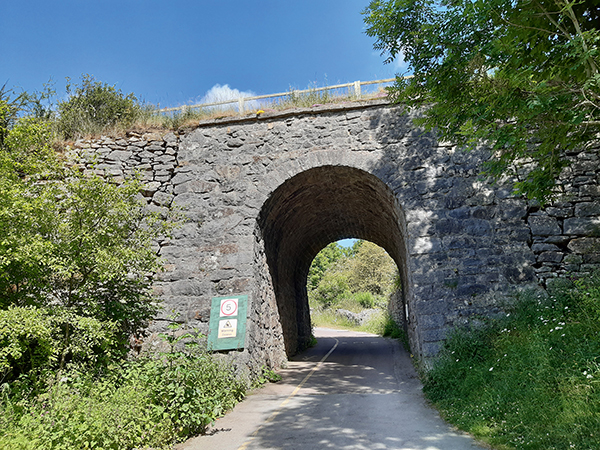
There’s a touch of Alice in Wonderland about going under the old, stone railway bridge into the National Stone Centre in Wirksworth, Derbyshire. And what you find on the other side is about to get a whole lot more exciting.
A detailed planning application for a £6.5million transformation of the National Stone Centre near Wirksworth, Derbyshire, was approved unanimously by Derbyshire Dales District Council in April. It is hoped building work will start in the autumn and be finished 18 months later.
The plans have been developed in partnership with Wirksworth-based building design and consultancy practice Babenko Associates.
The design has a cantilevered structure that sees the building emerge from the hillside, like the overhanging rock formations found in local gritstone outcrops such as Black Rocks and Stanage Edge, as well as reflecting the area’s industrial heritage.
Phase One of the project includes proposals for a 100 seater café / restaurant; four naturally lit classrooms with a combined capacity for 120 learners; 700m2 of museum / exhibition space; a souvenir shop; Changing Places facilities; a new thematic children’s playground; and a 1,200m2 open-air circular piazza for community events.
James Thorne is Chief Executive Officer of the Institute of Quarrying, which merged with the National Stone Centre (NSC) in 2021. He says: “In 2021 the value of tourism to the Peak District and Derbyshire’s economy was estimated at £1.96billion. A re-imagined and reinvigorated National Stone Centre will bring new visitors, as well as providing a focal point for engaging the public, schools and colleges in the science, history, and the present and future of the quarrying and mineral products industry.
“We are delighted to have reached this point in the project, which makes everything feel so much more real.”
The planning application was the end result of more than a year’s consultation and engagement with the NSC’s stakeholders. James says feedback was taken on board and helped shape the submitted planning application.
The National Stone Centre is on a 42-acre Site of Special Scientific Interest (SSSI) encompassing six former limestone quarries and 120-or-so mines, from which lead (in particular) was extracted.
In fact, there is a tentative proposal for the Peak District Mining Museum, which concentrates on the lead mining industry of the area, to relocate on the site from its current home two-and-a-half miles away in Matlock Bath.
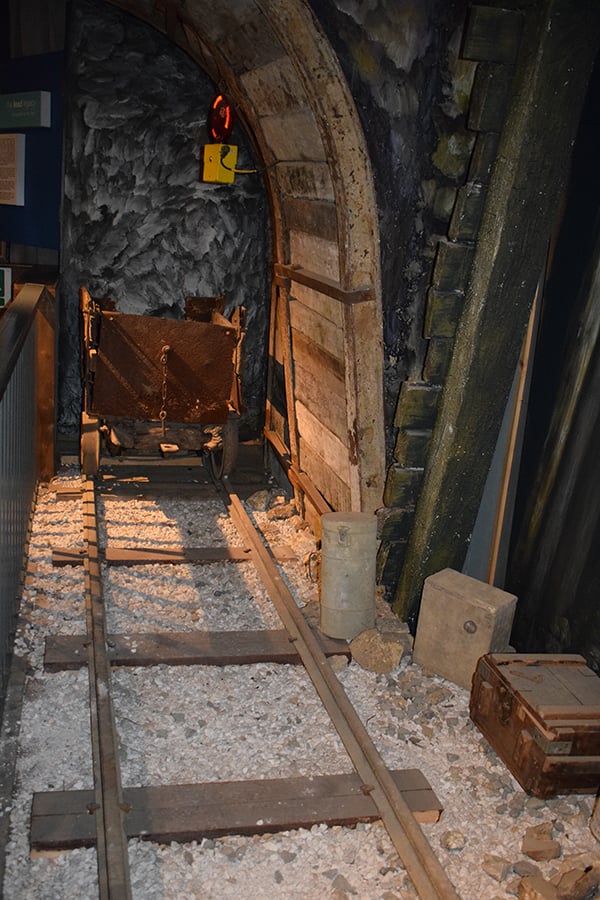
The NSC opened in 1990, thanks to the tireless work of Ian Thomas, its founding and long-serving (though now retired) Director, who received last year’s Distinguished Service Award from the Geological Society in recognition of his contribution to geology at the National Stone Centre (see below).
The aim of the Centre has always been to inspire people to engage with geology, history and industry in a story told by minerals (notably stone) and their extraction.
The merging of the NSC with the Institute of Quarrying (IQ) came with a vision of developing the NSC into a knowledge destination used by the stone and minerals industries to engage a wider audience.
The NSC, with its stone carving and dry stone walling training, Geo-Trail and country walks, restaurant and education centre in the heart of a stone production area always intended to spread the stone message to locals and visitors alike. But it was, as James Thorne describes it, “resource shy”. In other words, it lacked funds.
The association with IQ has provided additional resources to allow it to develop. And from the perspective of IQ, it provides an opportunity for the extractive industry to spread the message about the essential role of minerals in modern society, not least as low carbon natural stone for the construction industry.
James says IQ has recently run a course on biodiversity led by a geologist whose fascination with the subject had been inspired by a trip to the NSC as a child. During the visit she took part in a gem-panning activity, which is still part of what is on offer at the NSC.
IQ was previously on the outskirts of Nottingham but has now relocated to temporary accommodation at the NSC. It is waiting for the new building work to provide it with its new headquarters.
Proposals for improvement
The designs for the new buildings by Building Design Consultancy Babenko Associates, a practice scarcely a stone’s throw from the National Stone Centre, were on show at the NSC for much of last year. The proposals eventually submitted as the planning application were influenced by the feedback they received.
Gabriel Babenko, who heads his practice, says: “The National Stone Centre is a bit of a local landmark, so we jumped at the opportunity to present our ideas to provide the Centre with a new home, as well as office and meeting accommodation for the IQ and its members.”
He describes the site as “a real hidden gem, with stunning views and an industrial legacy of past quarrying”.
The public consultation process about the proposed development – online as well as at the NSC itself, and taken to Wirksworth Market and Matlock’s ‘Go Green’ event – received overwhelmingly positive support from the local community.
James Thorne says: “This process was very much about listening to what people had to say and providing a channel via which all feedback could be delivered – positive and negative.
“We had a good response to the consultation, both in person and in writing. This included insightful feedback on the project’s outline plans, which we have taken and used to inform a further iteration of the proposed development plans.
“We are looking to make a significant contribution to the Derbyshire visitor economy and, through doing so, inspire future generations to join an exciting sector to help tackle significant challenges such as digitalization, the circular economy, zero carbon, and the skills of people in the industry today.”
He says the NSC will become a world-class centre for training and continual professional development (CPD), for events and meetings, innovation and research, to inspire, educate and engage with as wide an audience as possible.
Throughout the consultation process, IQ reassured regular visitors to the National Stone Centre that facilities such as the Blue Lagoon restaurant would remain operational during the building works.
You can see plans of the proposals and find out more about them in a ‘Frequently Asked Questions’ section of the IQ website that is dedicated to the NSC project at www.quarrying.org/nationalstonecentre.
Viv Russell, who is President of IQ and on the Board of D2N2, one of 38 Local Enterprise Partnerships in England supporting business growth and levelling up, says the Institute has a driving ambition to realise the potential of the NSC and create a new home for IQ. He says: “This is a once in a generation opportunity to create a hugely exciting new visitor centre that celebrates the extraordinary role that stone plays in all of our lives.
“The existing building has limited potential for development, so we invited ideas from a small group of local architects to come up with their own vision for a new National Stone Centre.
“[They] gave us a lot of food for thought, but ultimately the team at Babenko Associates really captured our imagination with their ideas around construction materials, sustainability, and use of space. In addition, we want the NSC to continue to grow as part of the vibrant local community. Employing a partner that can be on site in minutes and also understands the nuances of the local area is a huge benefit to us.”
Activities at the National Stone Centre include courses on stone carving and dry stone wall building, both of which have left a legacy at the Centre itself, including an impressive record of different styles of dry stone walling from around the country in what is called the Millennium Wall, which actually comprises 19 different sections of wall.
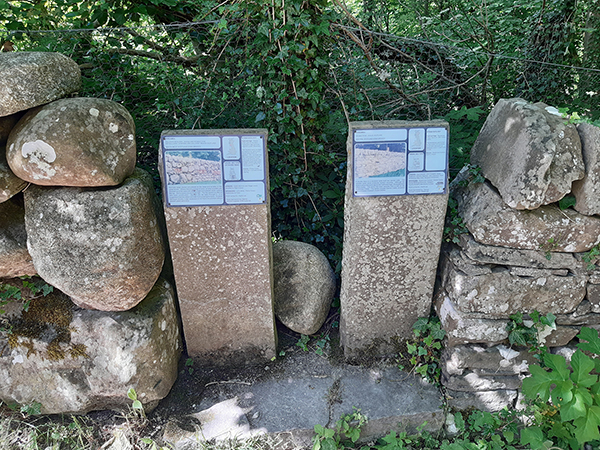
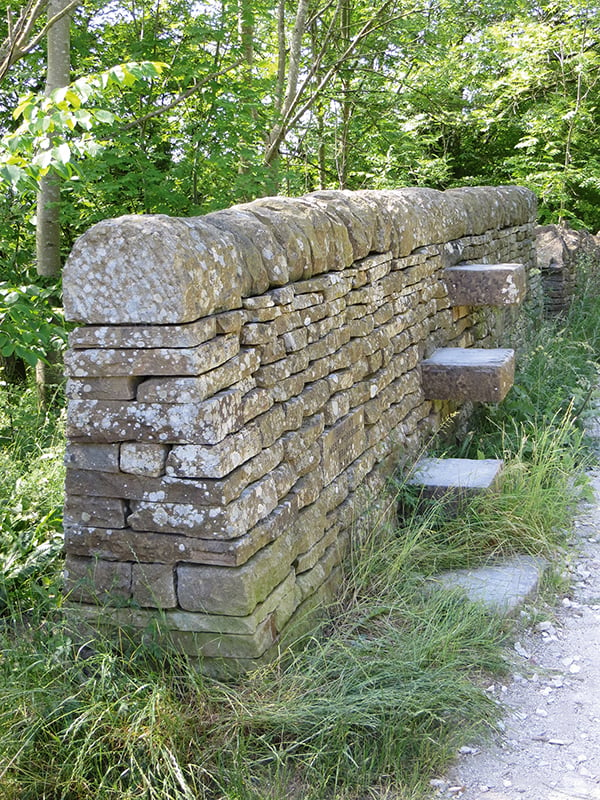
It was built in the year 2000 (hence the name) by more than 150 members of the Dry Stone Walling Association, which is based in Cumbria.
The wallers came from all over Britain, bringing their own local stones with them to add to the geological variety to be seen at the NSC. They built the different sections of dry stone wall in the distinctive styles of the areas they were from – because wallers and dykers work in their own traditional styles, often dictated by the geology of their area, in different parts of the UK. The walls were built on the four days 29 April 2000 to 1 May.
All around the NSC information boards explain what you are looking at and on the Millennium Wall each section of walling is explained and the stone used identified.
The story of the geology of the area occupied by the NSC unfolds along a geological trail of about half-a-mile around the six quarries that once operated on the site. The quarrying has revealed key parts of a lagoon and reef, as well as a thin band of volcanic ash. It is why the site was chosen as the location for the NSC. And it is because of its geological significance that much of the site is categorised and protected as a Site of Special Scientific Interest.
The trail starts and ends at the Blue Lagoon restaurant. It is called the Blue Lagoon because 330million years ago it would have been standing in a fairly shallow lagoon in the tropics. The disused limestone quarries of the NSC once formed part of a tropical island surrounded by shallow lagoons, barrier reefs and white sand beaches. There would have been volcanoes erupting from time to time around what is now Ashover and Matlock, as well as further north.
This was during the Carboniferous, which takes its name from the large underground coal deposits created by the eventual fossilisation of the fallen trees of a lush forest that covered the land. This part of the Midlands was once famous for its coal mines.
Many of the creatures that lived in and around the blue lagoon that gives the restaurant its name had shells made from calcium. Eventually deposits of the calcium built up on the floor of the lagoon to form the building blocks of the limestones (limestone is Calcium Carbonate – CaCO3).
Today that stone contains the fossils of corals, brachiopods and crinoids, sea lilies and sharks’ teeth from the creatures who lived in the sea, providing an opportunity for those visiting the NSC to see some of the fossils in the visitor centre.
Gradually the movement of the tectonic plates and pressure and heat on the buried sediments of the blue lagoon resulted in the limestones found today in Derbyshire and other parts of the Peak District. They have been (and still are) used to build the towns and villages of the region, giving it the distinctive identity that makes it such a popular place to live and visit.
Ian Thomas receives the Distinguished Service Award of the Geological Society
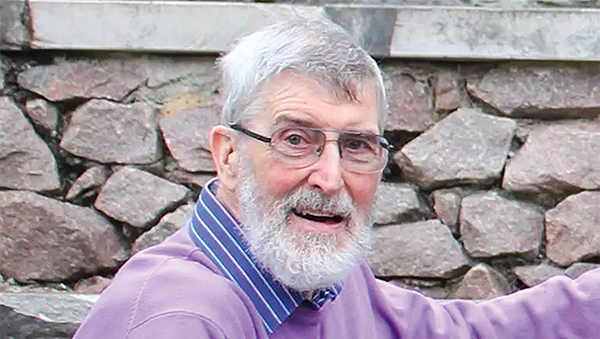
Ian Thomas, the founding Director of the National Stone Centre, was the recipient of the 2022 Distinguished Service Award from the Geological Society of London.
The Geological Society’s Distinguished Service Award is presented annually in recognition of a member who has made an outstanding contribution to advancing the profession and science of geology. Ian was presented with his Award at a ceremony on 8 June at the Geological Society’s headquarters at Burlington House, The Strand, London.
When the news that Ian was to receive the Award went public, he said: “Naturally, I am personally absolutely delighted to learn of the Society’s decision to honour me but, in a broader sense, I see it as an endorsement of all we have achieved and are planning to do at the National Stone Centre by enhancing geological interests nationally.”
Ian initiated the concept of the National Stone Centre as long ago as 1980. A decade later it opened as a registered charity in Wirksworth (see main story).
Ruth Allington, an IQ and NSC Trustee who is President of the Geological Society, said: “It’s wonderful that Ian has been recognised for his lifelong dedication to the science of geology by his peers through this award. His passion for the subject is inspiring and without it we wouldn’t have the facilities at the National Stone Centre to spark that passion in the next generation.”


